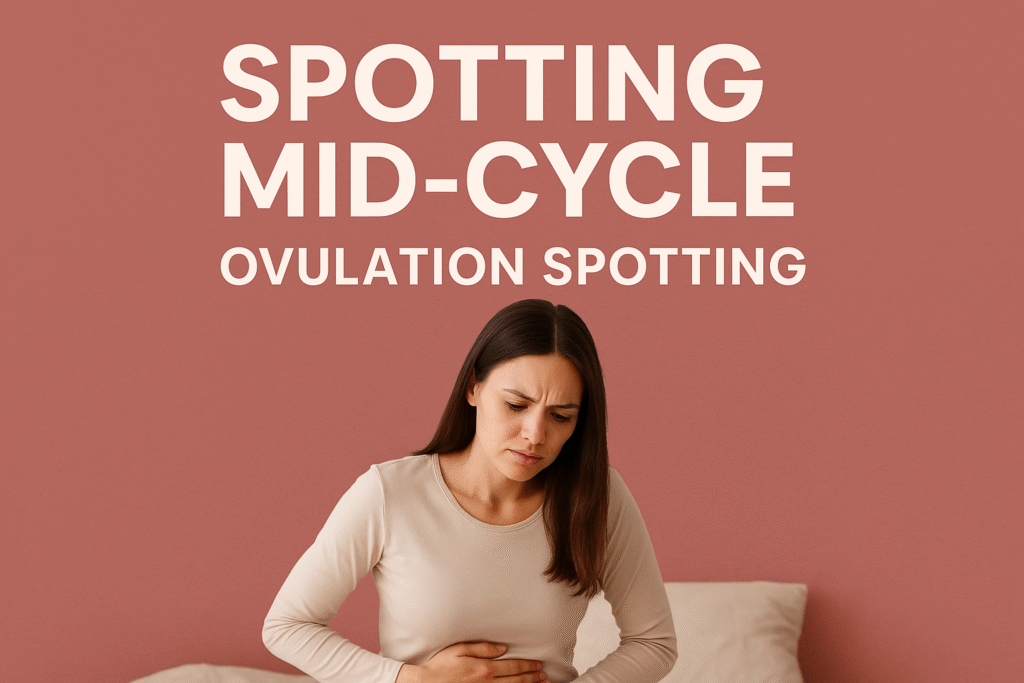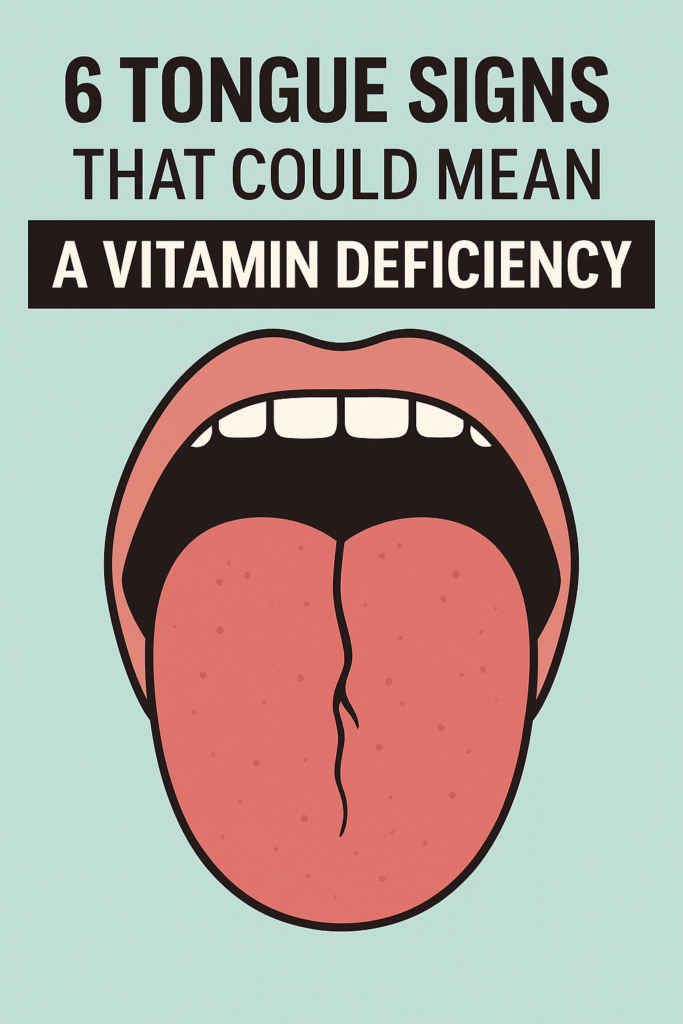
⚠️ Affiliate Disclaimer: This post may contain affiliate links, which means I may earn a small commission — at no extra cost to you — if you make a purchase through one of these links. I only recommend products or services I genuinely trust and believe can provide value. Thank you for supporting My Medical Muse!
Mid-Cycle Spotting Explained: 10 Key Facts About Ovulation Bleeding
Why Is There Spotting Mid-Cycle or Is It Ovulation?
Spotting in the middle of your menstrual cycle can be unsettling. You are not on your period, yet you notice light bleeding or a pink or brown discharge. This unexpected bleeding raises questions, is it related to ovulation, or could it signal another underlying issue?
Mid-cycle spotting is relatively common and can happen for different reasons. In many cases, it is linked to hormonal changes that occur during ovulation, for others, it may be connected to birth control use, infections, or conditions such as fibroids, polyps, or endometriosis.
In this guide, we take a closer look at mid-cycle spotting. You will learn what ovulation spotting looks like, how it differs from other types of bleeding, when it may be a sign of an underlying condition, and the steps you can take to monitor, manage, and discuss it with your healthcare provider.
Table of Contents:
What Is Mid-Cycle Spotting?
Mid-cycle spotting refers to light vaginal bleeding that occurs between periods, usually around the middle of the menstrual cycle. Unlike a regular period, which involves a steady flow of blood lasting several days, spotting is much lighter and often short-lived.
What It Looks Like
Spotting can vary in appearance and may show up as:
- Pink or light red streaks on underwear or toilet tissue
- Brown or rust-colored discharge, which indicates older blood leaving the body
- Just a few drops of blood, not enough to require a pad or tampon
How Common Is It?
Mid-cycle spotting is not unusual. Research suggests that about 10-15% of women experience light bleeding during ovulation. For most, it is harmless and simply reflects normal hormonal shifts.
Why It Matters
Although spotting is often benign, it can sometimes point to an underlying condition such as hormonal imbalance, thyroid issues, infections, fibroids, or endometriosis, because of this, it’s important to pay attention to the timing, frequency, and characteristics of the bleeding. Keeping track of these details can help distinguish between normal ovulation-related spotting and bleeding that requires medical evaluation.
Ovulation and How It Works
To understand why spotting might happen mid-cycle, it helps to look closely at how ovulation works and what happens hormonally throughout the menstrual cycle.
The menstrual cycle is typically divided into three main phases:
Follicular Phase (Day 1-14 in a 28-Day Cycle)
- Starts on the first day of menstruation.
- The pituitary gland releases follicle-stimulating hormone (FSH), which helps several ovarian follicles mature.
- One follicle usually becomes dominant and prepares to release an egg.
- Estrogen levels rise, thickening the uterine lining (endometrium) in preparation for possible implantation.
Ovulation (Around Day 14 in a 28-Day Cycle)
- Triggered by a surge in luteinizing hormone (LH).
- The mature egg is released from the dominant follicle in the ovary.
- Estrogen peaks just before ovulation, and progesterone begins to rise immediately afterward.
- The egg travels into the fallopian tube, where it can be fertilized within about 12-24 hours.
Luteal Phase (Day 15-28)
- The ruptured follicle transforms into the corpus luteum, which produces progesterone.
- Progesterone stabilizes and thickens the uterine lining further, creating an ideal environment for embryo implantation.
- If pregnancy does not occur, the corpus luteum breaks down, hormone levels drop, and menstruation begins.
Ovulation is more than just egg release. It represents a delicate hormonal transition, shifting from estrogen dominance to a balance of estrogen and progesterone. This hormonal fluctuation is one of the main reasons some women experience spotting during ovulation.
What Is Ovulation Spotting?
Ovulation spotting is a brief episode of light bleeding that occurs right around the time an egg is released, usually mid-cycle, while not all women experience it, for those who do, it can be a useful physical sign of fertility.
Key Characteristics of Ovulation Spotting
- Timing: Occurs between day 12-16 in a 28 day cycle (depending on individual cycle length).
- Duration: Typically lasts 1-2 days, rarely longer.
- Flow: Very light, may appear as pink, red, or brown streaks, never heavy enough to resemble a period.
Other Accompanying Signs of Ovulation:
- Fertile cervical mucus (clear, slippery, and stretchy, like raw egg whites)
- Mild pelvic discomfort or twinges on one side of the lower abdomen (known as mittelschmerz)
- Increased libido or heightened sexual desire
- Slight rise in basal body temperature (BBT) after ovulation
How It Differs From a Period
Unlike menstrual bleeding, ovulation spotting is:
- Short-lived
- Very light in flow
- Not associated with shedding of the uterine lining
- Often accompanied by fertile signs rather than premenstrual symptoms
For many women, ovulation spotting is harmless and simply reflects the natural hormonal changes of the cycle. However, if bleeding is heavy, persistent, or unpredictable, it may point to other causes that should be evaluated by a healthcare provider.
Why Spotting Happens During Ovulation
Not every woman experiences ovulation spotting, but for those who do, the cause is usually tied to natural changes happening in the body at mid-cycle. The most common explanations include:
1. Hormonal Fluctuations
Just before ovulation, estrogen levels peak to trigger the release of the egg. Immediately after the egg is released, estrogen briefly dips before progesterone rises. This sudden hormonal shift can cause a temporary destabilization of the uterine lining, leading to light bleeding or spotting.
2. Follicle Rupture (Egg Release)
When the ovarian follicle bursts to release a mature egg, a small amount of bleeding may occur at the ovary itself. While this bleeding doesn’t come directly from the uterus, it can mix with cervical mucus and appear as light spotting. This is less common but still a recognized cause.
3. Cervical Changes
During ovulation, the cervix becomes softer and more vascular, meaning it has an increased blood supply, because of this, even minor irritation such as sexual intercourse or a pelvic exam can trigger light spotting.
In most cases, ovulation-related spotting is completely normal, harmless, and short-lived. It’s usually not a sign of disease, especially if it occurs predictably each cycle.
How to Tell If Spotting Is From Ovulation or Something Else
Spotting outside the menstrual cycle isn’t always linked to ovulation. To figure out the cause, it’s important to look at timing, duration, flow, and associated symptoms.
Signs It’s Likely Ovulation Spotting
- Occurs mid-cycle, around days 12-16 in a typical 28-day cycle
- Appears consistently at the same time each month
- Lasts only 1-2 days
- Flow is very light- pink or brown rather than bright red
- Accompanied by other ovulation signs: fertile cervical mucus, mild one-sided pelvic cramps (mittelschmerz), or increased libido
Signs It May Be Something Else
- Spotting occurs randomly throughout the cycle, not just mid-cycle
- Lasts for several days or is heavier, requiring pads or tampons
- Accompanied by pelvic pain, fever, or foul-smelling discharge (possible infection)
- Happens regularly after sex, which may point to cervical issues
- Occurs with missed, irregular, or very short cycles
If your spotting doesn’t fit the typical ovulation pattern, it could be linked to other causes such as hormonal imbalances, infections, or structural issues in the reproductive system. Keeping track of the details and discussing them with a healthcare provider can help determine the exact cause.
Other Causes of Mid-Cycle Spotting
While ovulation is one of the most common explanations for mid-cycle spotting, it is not the only one. Several other factors can trigger light bleeding between periods.
a) Hormonal Imbalances
- Low progesterone: If progesterone levels after ovulation are insufficient, the uterine lining may shed in small amounts, leading to spotting.
- Thyroid disorders: Both underactive (hypothyroidism) and overactive (hyperthyroidism) thyroid conditions can disrupt menstrual cycles.
- Polycystic ovary syndrome (PCOS): PCOS often causes irregular ovulation and unpredictable spotting due to hormone fluctuations.
b) Birth Control and Hormonal Medications
- Starting, stopping, or missing pills can cause withdrawal bleeding or irregular spotting.
- Hormonal IUDs, implants, or injectables may lead to breakthrough bleeding, especially in the first few months of use.
c) Infections and Cervical Issues
- Sexually transmitted infections (STIs): Infections such as chlamydia or gonorrhea can cause cervical inflammation and bleeding.
- Cervicitis: Inflammation of the cervix often results in light bleeding, especially after sex.
- Cervical ectropion: A benign condition where delicate glandular tissue extends onto the cervix, making it more prone to bleeding.
d) Structural Causes
- Uterine fibroids: Noncancerous growths in the uterus that can lead to spotting, heavy periods, or pelvic pressure.
- Endometrial polyps: Small tissue growths inside the uterus that may cause irregular bleeding.
- Adenomyosis: A condition where endometrial tissue grows into the muscular wall of the uterus, often linked with heavy periods and spotting.
e) Early Pregnancy
- Implantation bleeding may occur when a fertilized egg attaches to the uterine lining. This usually happens about 6-12 days after ovulation and can sometimes be mistaken for mid-cycle spotting.
f) Perimenopause
As women approach menopause, estrogen and progesterone levels fluctuate unpredictably. These hormonal shifts can cause irregular cycles, breakthrough bleeding, or spotting between periods.
When Spotting May Be a Concern
Most mid-cycle spotting is mild and harmless, especially if it occurs consistently around ovulation. However, it’s important to pay attention to certain warning signs. You should consult a healthcare provider if:
- The spotting is heavy enough to require pads or tampons.
- It lasts longer than 2-3 days.
- It is accompanied by severe pelvic or abdominal pain.
- There is unusual vaginal odor, discharge, or fever, which may suggest infection.
- You are postmenopausal but experience spotting.
- Spotting occurs frequently after sex, which could signal cervical or vaginal issues.
In these situations, spotting may be a sign of an underlying medical condition that needs evaluation.
Spotting vs. Implantation Bleeding
Many women confuse ovulation spotting with implantation bleeding, since both are light, short episodes of bleeding. However, the timing and context are different.
| Feature | Ovulation Spotting | Implantation Bleeding |
| Timing | Mid-cycle (around day 12-16 in a 28-day cycle) | 6-12 days after ovulation, close to expected period |
| Duration | 1-2 days | 1-3 days |
| Flow | Very light, often pink or brown | Very light, pink or brown |
| Associated Signs | Fertile cervical mucus, ovulation cramps (mittelschmerz), increased libido | Early pregnancy signs such as fatigue, breast tenderness, nausea |
If spotting occurs about a week before your expected period, implantation bleeding is a possibility, especially if accompanied by early pregnancy symptoms. A pregnancy test after a missed period is the only way to confirm.
Tracking Your Cycle and Spotting
Keeping track of your menstrual cycle is one of the most effective ways to understand whether mid-cycle spotting is normal ovulation bleeding or linked to another cause. Careful observation helps you recognize patterns and provides valuable information for your healthcare provider if concerns arise.
Tools You Can Use
- Period Tracking Apps
Digital apps allow you to log menstrual dates, spotting episodes, cervical mucus changes, mood, and symptoms. Many can also predict fertile days based on your cycle history. - Ovulation Predictor Kits (OPKs)
These test strips detect surges in luteinizing hormone (LH), which occurs right before ovulation. If spotting coincides with a positive OPK result, it’s likely ovulation-related. - Basal Body Temperature (BBT) Charting
By measuring your body temperature every morning before getting out of bed, you can spot the slight rise (0.3-0.6°C / 0.5-1°F) that occurs after ovulation. Recording spotting alongside your BBT chart helps confirm timing. - Cervical Mucus Monitoring
Cervical mucus becomes clear, slippery, and stretchy (egg-white consistency) during ovulation. If spotting appears with these changes, it strengthens the likelihood that it’s ovulation spotting.
Documenting spotting episodes across multiple cycles provides a clear picture of whether bleeding is tied to ovulation or whether it occurs unpredictably, which may warrant further evaluation.
Natural Remedies and Lifestyle Tips
If ovulation spotting is mild and harmless, it usually doesn’t require medical treatment. However, lifestyle adjustments can help promote hormonal balance and reduce irregular bleeding.
1. Maintain a Balanced Diet
- Include healthy fats (avocados, nuts, olive oil) to support hormone production.
- Eat lean protein for steady energy and hormonal regulation.
- Focus on fiber-rich foods (whole grains, vegetables, legumes) to support estrogen metabolism.
2. Manage Stress
- Chronic stress raises cortisol, which can interfere with reproductive hormones.
- Practices such as meditation, yoga, journaling, or deep-breathing exercises can help keep stress in check.
3. Prioritize Quality Sleep
- Inadequate sleep disrupts melatonin and cortisol, which influence reproductive hormones.
- Aim for 7-9 hours of restful sleep each night.
4. Balance Exercise
- Moderate, regular activity supports hormone health.
- Avoid over-exercising or under-eating, as both can suppress ovulation and cause irregular bleeding.
5. Support Gut Health
- A balanced microbiome helps regulate how estrogen is processed in the body.
- Include probiotic-rich foods (yogurt, kefir, sauerkraut) and prebiotic fibers (bananas, garlic, onions).
These strategies won’t stop ovulation spotting entirely, but they can reduce cycle irregularities and support overall reproductive health.
Medical Treatments for Mid-Cycle Spotting
In most cases, mid-cycle spotting related to ovulation doesn’t require treatment. However, if the bleeding is frequent, heavy, or caused by an underlying condition, medical care may be necessary. Treatment depends on the root cause:
1. Hormonal Therapy
- Birth control pills or patches can regulate cycles and prevent hormonal fluctuations that trigger spotting.
- Progesterone supplements may be prescribed if low progesterone after ovulation is the cause.
2. Thyroid Medications
If thyroid disorders (hypothyroidism or hyperthyroidism) are responsible, your doctor may prescribe medication to restore normal thyroid function, which often stabilizes menstrual cycles.
3. Treatment for Infections
- Antibiotics or antivirals may be required if spotting is linked to sexually transmitted infections (STIs) or cervicitis.
- Treating the infection usually resolves spotting once inflammation subsides.
4. Procedures or Surgery
- Uterine fibroids or endometrial polyps may be treated with minimally invasive surgery (such as hysteroscopic removal).
- Endometriosis may require laparoscopic surgery in severe cases.
5. Fertility Treatments
If irregular ovulation and mid-cycle spotting are linked to infertility, doctors may recommend fertility medications (like clomiphene citrate or letrozole) or assisted reproductive technologies (ART) to help regulate ovulation and improve conception chances.
Always consult a healthcare provider before starting or adjusting any treatment, as the right approach depends on the individual’s medical history and the specific cause of spotting.
FAQs About Mid-Cycle Spotting
Is ovulation spotting a sign of fertility?
Yes. Ovulation spotting often indicates that ovulation has occurred, which is the most fertile time in the cycle. However, not all fertile cycles involve spotting, so its absence doesn’t mean you aren’t ovulating.
Can ovulation spotting happen every month?
It can, but not always. Some women experience it consistently, while others only notice it occasionally or not at all.
Should I worry if I only spot sometimes mid-cycle?
No. Occasional spotting around ovulation is usually harmless. However, if spotting is new, heavier than usual, or persists for several cycles, it’s best to check with a doctor to rule out other causes.
Does spotting mean I can’t get pregnant?
Not at all. Ovulation spotting does not interfere with fertility. In fact, because it can coincide with your most fertile window, some women use it as a natural sign to time intercourse for conception.
How can I tell if spotting is from ovulation or implantation?
Timing is key. Ovulation spotting happens mid-cycle (days 12-16 in a typical 28-day cycle), while implantation bleeding occurs about a week before your expected period (6-12 days after ovulation).
Final Thoughts
Spotting in the middle of your cycle can feel confusing especially when you’re not expecting bleeding outside of your period. The important thing to remember is that not all spotting is a cause for alarm. For many women, it’s simply ovulation spotting, a natural byproduct of hormonal changes that occur when the body releases an egg.
That said, spotting can sometimes act as a signal. Persistent or unusual bleeding may point to conditions like hormonal imbalance, thyroid disorders, infections, fibroids, or polyps. While these issues vary in severity, most are treatable once properly identified.
How to Put This Into Practice
- Track your cycle: Use an app, OPKs, or a simple journal to note when spotting happens.
- Look for patterns: If spotting consistently lines up with mid-cycle changes and is light and brief, it’s most likely linked to ovulation.
- Watch for red flags: Heavy bleeding, prolonged spotting, postmenopausal bleeding, or spotting with pain or unusual discharge should be checked by a healthcare professional.
Empowering Perspective
Think of spotting as your body’s way of communicating. Rather than something to fear, it’s a clue, helping you understand your cycle, recognize your fertile window, and stay alert to your reproductive health.
If spotting is light, predictable, and short-lived, it’s usually a normal part of ovulation.
If it’s new, irregular, or troubling, don’t ignore it, seek guidance from your healthcare provider.
By learning to interpret these signs, you’re not just easing unnecessary worry, you’re taking proactive steps toward better reproductive awareness, fertility understanding, and overall health.
👩⚕️ Need Personalized Health Advice?
Get expert guidance tailored to your unique health concerns through MuseCare Consult. Our licensed doctors are here to help you understand your symptoms, medications, and lab results—confidentially and affordably.
👉 Book a MuseCare Consult NowRelated Blog Post:
- How Long Before Estrogen Cream Works: 3 Proven Timelines for Vaginal Dryness Relief
- How Common Is Ovulation Pain? 7 Shocking Facts Every Woman Must Know
- Birth Control Pill and Low Libido: 7 Surprising Facts Every Woman Should Know
- 8 Powerful Reasons Why Am I Getting UTIs All the Time Despite Good Hygiene
- Perimenopause Bedtime Anxiety: 9 Proven Ways to Calm Cortisol and Sleep Better


